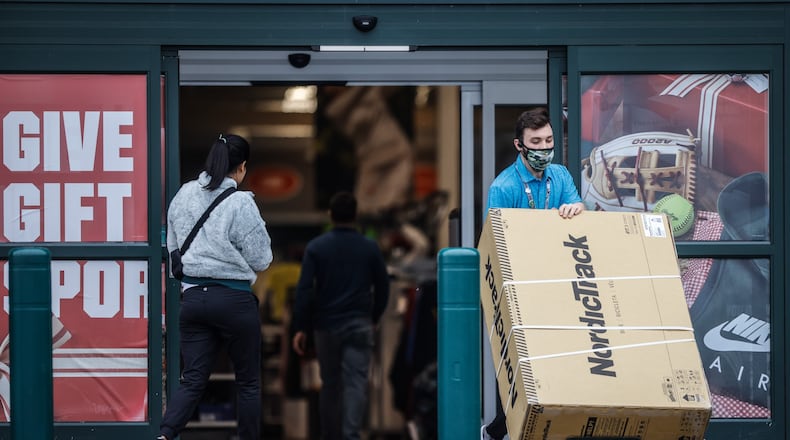“Shoppers were eager to secure their gifts ahead of the retail rush, with conversations surrounding supply chain and labor supply issues sending consumers online and to stores in droves,” Steve Sadove, senior advisor for Mastercard and former CEO and Chairman of Saks Inc., said in a release. “Consumers splurged throughout the season, with apparel and department stores experiencing strong growth as shoppers sought to put their best-dressed foot forward.”
Consumer spending drives roughly 70 percent of U.S. economic activity, and retailers can generate as much as 40 percent of their annual revenue in the last two months of the year, making holiday shopping a closely watched barometer of economic health.
Mastercard SpendingPulse defines “U.S. retail sales” as sales at retailers and food service merchants of all sizes. It said that holiday spending insights are preliminary.
E-commerce sales stayed high this holiday season, making up 20.9% of total retail sales, up from 20.6% in 2020 and 14.6% in 2019. That sector continues to experience elevated growth as consumers enjoy browsing and buying in the comfort of their own homes.
Consumers shopped earlier in 2021 than in years past, continuing a trend that took off in 2020. That’s attributed to the fact that retailers offered special promotions early and then again later in the season as shoppers raced to secure “guaranteed by Christmas” shipping offers, according to Mastercard. Looking at the survey’s expanded holiday season, total retail sales were up 8.6% year-over-year for the 75 days between Oct. 11 and Dec. 24.
Sales of jewelry showed some of the strongest year-over-year and year-over-two-years growth.
An area that remained key was Thanksgiving weekend, running Friday, Nov. 26 through Sunday, Nov. 28, when shoppers drove U.S. retail sales up 14.1% year over year. In-store sales also rebounded, increasing 16.5% year over year, while e-commerce sales experienced sustained growth, up 4.9% year over year.
Black Friday again marked the top spending day of the 2021 holiday season.
The holiday retail sales growth was expected. The National Retail Federation in October forecasted that holiday sales would grow between 8.5 percent and 10.5 percent over 2020 to between $843.4 billion and $859 billion. Those numbers, which exclude automobile dealers, gasoline stations and restaurants, compare with a previous high of 8.2 percent in 2020 to $777.3 billion and an average increase of 4.4 percent over the past five years.
The NRF had projected that online and other non-store sales would increase between 11% and 15%. The Mastercard SpendingPulse data put that increase at 11% over last year for Nov. 1 to Dec. 24.
Online shopping continues to be a rapidly expanding part of retail sales, especially during the COVID-19 pandemic, according to NRF. Growth in non-store retail sales, which includes online and mobile shopping, greatly surpassed overall retail sales growth in Ohio in 2020 compared to 2019, according to the Economics Center of the University of Cincinnati.
About the Author

